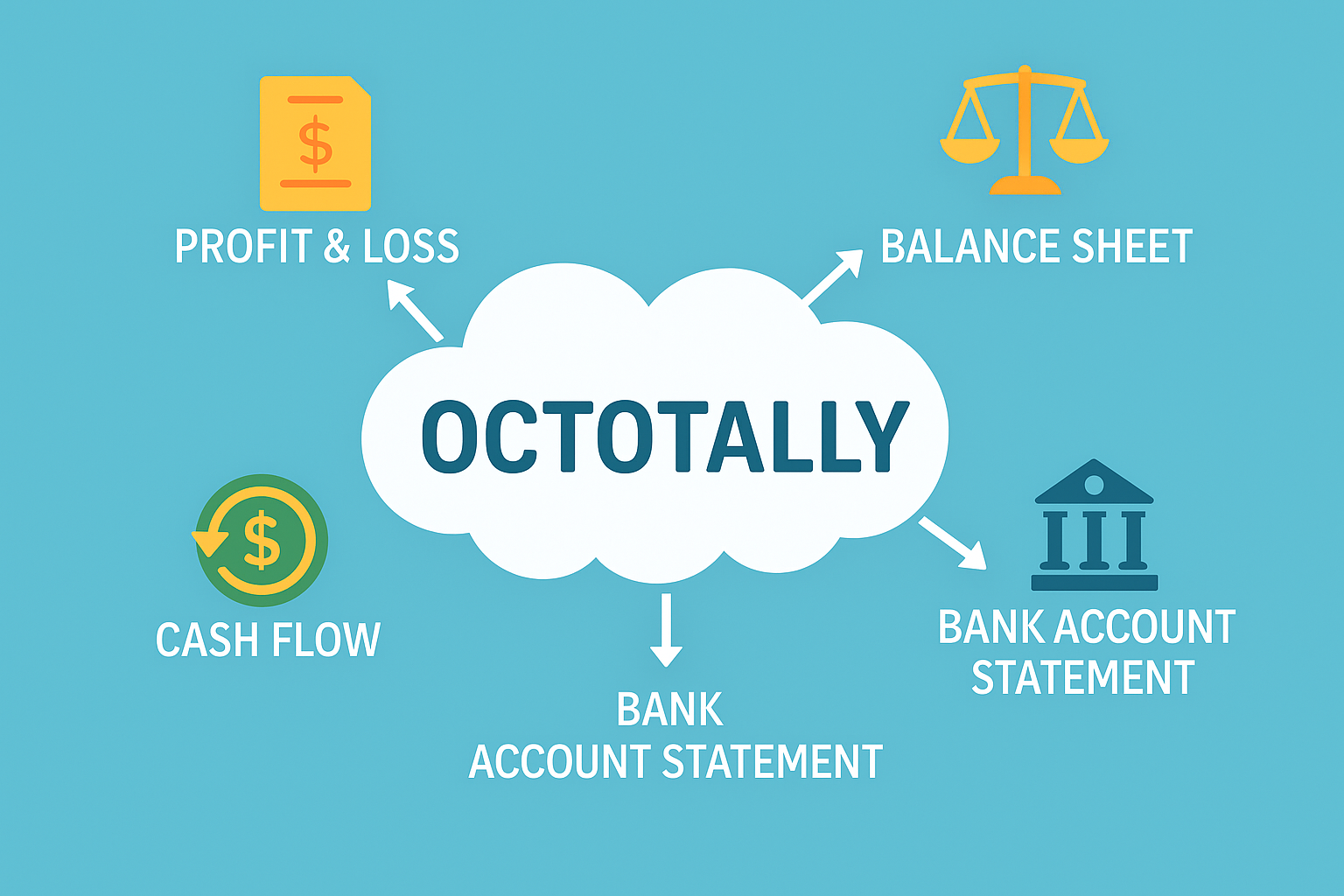Free Accounting Tools for Small Business Owners & Freelancers
This is your **free, easy-to-use accounting tools** designed for sole proprietors, freelancers, and small business owners. Input your profit & expense data (manual or Excel) to get instant, accurate Profit & Loss, Balance Sheet, Cash Flow, and more.
Input Your Data
Record Payments Received
All Transactions
Excel/CSV Upload
Drag and drop your Excel or CSV file here, or
Supported formats: .xlsx, .xls, .csv
Excel/CSV Template Requirements:
- Column A: Date (MM/DD/YYYY)
- Column B: Description
- Column C: Category
- Column D: Amount
- Column E: Type (Income/Expense/Asset/Liability/Equity)
- Column F: Currency (INR/USD) - New!
View Your Reports
Financial Dashboard Overview
Monthly Revenue Trend
(Income transactions grouped by month)
Income Distribution by Category
(Percentage of total income from each category)
Top Expense Categories
(Largest expenses by category)
Expense Distribution by Category
(Percentage of total expenses from each category)
Recent Transactions
(Last 5 transactions added, sorted by date descending)
Our Community & Users
This finance manager is designed to empower sole proprietors, freelancers, and small business owners to master their finances themselves. We want to provide them with an easy-to-use yet intuitive and effective tool for making everyday transactions and creating basic financial Insight.
Who Can Use This Tool?
- Small Business Owners
- Freelancers & Consultants
- Sole Proprietors
- Micro-Businesses
- Startup Founders
- Anyone needing simple financial tracking
Our Growing Community
10,000+
Active Users Globally
Our users span various sectors, including:
- E-commerce Sellers
- Local Retailers
- Service Providers (e.g., Marketing, IT)
- Artisans & Crafters
- Home-based Businesses
A "Help" section defines financial terms.
Financial Terms Defined
1. Income: Money Coming In
The amount of money you earns by selling goods or services in your business.
**Example:** When you sell something for $100 or $80, then $100 and $80 is your income. When you perform a service for $20, then $20 is income as well.
2. Expenses: Money Going Out
These are the costs your company pays to operate. They eat into your profit.
**Example:** Your monthly rent, wages paid to employees or worker, electricity bill, or money spent on marketing or ads.
3. Assets: All that things which belongs to your business or a company.
**Example:** Money in your bank account, computers, equipment, inventory (the goods you are going to sell), or money owed to you by customers (Accounts Receivable).
4. Liabilities: What Your Business Owes
These are what other parties owe your business. They are debts that your business has to pay.
**Example:** Amounts owed to suppliers for purchases on credit (Accounts Payable), bank loan, or electricity bills not yet paid.
5. Equity: The Owner's Share
This is what you, the owner, have been left with if your entire assets were sold and all your debts were paid. It's your ownership stake.
**Equation:** Assets - Liabilities = Equity
**Example:** How much money you originally invested in the business, and profits you've retained and reinvested.
Category Explanations
Income Categories:
-
Sales Revenue: Money generated from the direct sale of your main products or services.
**Example:** 10 t-shirts sold at $20 each is $200 Sales Revenue.
-
Service Revenue: Money received for providing services.
**Example:** Receiving $500 from consulting services provided to a client.
-
Other Income: Any other income aside from your main sales or services.
**Example:** Interest accrued on a business savings account or selling used office equipment.
Expense Categories:
-
Rent Cost: Cost of renting business premises, a store, or machinery.
**Illustration:** Payment for a $1,000 monthly office rent.
-
Utilities Costs: These include expenses for services such as electricity, water, gas, and internet.
For instance, you might pay $150 for electricity every month.
-
Salaries Expense: Payments to employees as wages for work.
**Example:** Paying your weekend worker $800 for the month.
-
Marketing Expense: This is the money you spend to promote your business.
**Example:** Putting $200 into a social media advertising campaign.
-
Other Expenses: All other operating expenditures of your company not covered under other given categories.
**Illustration:** Office supplies, minor maintenance, or software subscription.
Asset Classes:
-
Cash: Actual money in possession.
**Example:** Draw money out of your firm's petty cash box or cash drawer.
-
Bank: Funds in your business savings and checking accounts.
**Example:** The balance of your savings or business checking account.
-
Accounts Receivable: Amounts owing to your business by customers in credit sales.
Imagine you sold an item to a customer for $300, and they’ll pay you next month.
- Fixed Assets: These are long-term things your business owns that you don’t plan to sell, like office buildings, heavy machinery, vehicles, or big computer systems.
Liability Categories:
-
Accounts Payable: This is the money your company owes to suppliers or vendors for goods or services you received on credit.
For instance, if you bought printer ink for $150, you need to pay for it next week.
-
Loans Payable: This is the money your business has borrowed that needs to be repaid.
This could be a loan from a bank or from a private lender.
Equity Categories:
-
Owner's Capital: Is the money or property that the owner first invests in the business.
For example, if you put in $5,000 of your own money to start the business, that’s your capital.
-
Retained Earnings: This refers to the profits your business has made that you’ve kept to use for reinvesting instead of paying them out to owners.
For instance, if your business earned $1,000 last year and you decided to use that money to buy new equipment, that’s retained earnings.
Confirm Clear All Transactions
Are you sure you want to clear ALL transactions? This action cannot be undone. All your financial data will be permanently deleted.
Testimonial

 .
.



Features
1. P/L Statement 2. Cash Flow 3. Balance sheet 4. Bank account statement 5. Ledger statement 6. Dashboard
Frequently Asked Question
Here are some common questions about the Small Business Finance Manager:
